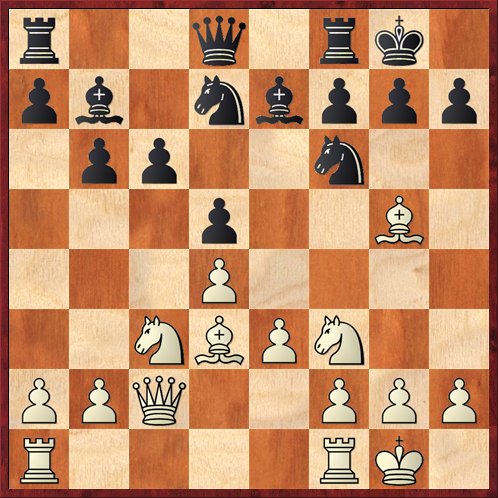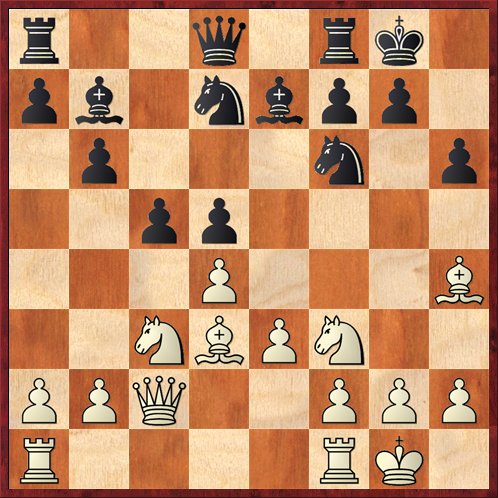Over the weekend I spent a lot of time studying a fascinating game from the first round of the U.S. Women’s Championship, won by a 13-year-old girl from the Bay Area, Ashritha Eswaran. Eswaran is the lowest-rated player in the tournament and a relative newbie to top-level adult chess, although she has been extremely successful at the scholastic level. She is the #1-rated girl under 16 in the country (at age 13!), has twice been a Girls State Champion and twice a Girls National Champion. However, I think that everybody expected her to be out of her league when playing against seasoned masters like Irina Krush, Anna Zatonskih, and Tatev Abrahamyan.
Well, so far Ashritha has more than held her own. Not only did she beat Viktorija Ni in astounding fashion in round one, she also outplayed Camilla Baginskaite in round three and drew from a better position against Alisa Melekhina in round four. After four rounds, she is tied with Abrahamyan for third place. There’s a long way to go, but I would say that she has already exceeded all expectations and announced herself as a future force in U.S. women’s chess.
I’m planning to record a ChessLecture about her game with Ni. I’m not planning to say anything about the opening in the lecture, so I’ll talk about it a little bit here. I was struck by its similarity to another game that I discussed in my blog just a month ago. Here is the position from Ni-Eswaran after ten moves:
 Position after 10. … ed. White to move.
Position after 10. … ed. White to move.
FEN: r2q1rk1/pb1nbppp/1pp2n2/3p2B1/3P4/2NBPN2/PPQ2PPP/R4RK1 w – – 0 11
And here, for comparison, is the position after eleven moves of the game Craig Mar-NN that I discussed in my post, How a Master Eats an Expert:
 Position after 11. … Bb7. White to move.
Position after 11. … Bb7. White to move.
FEN: r2q1rk1/pb1nbpp1/1p3n1p/2pp4/3P3B/2NBPN2/PPQ2PPP/R4RK1 w – – 0 12
They’re pretty similar! Both positions came from a Queen’s Gambit Declined, where Black fianchettoed his/her queen bishop. The only substantive difference is that NN has moved his pawn to c5, while Eswaran played the more conservative … c6. Yet NN lost in 25 moves, while Eswaran won in 83 moves. What made the difference?
One difference is that … c6 is a little bit more flexible. With the pawn on c5, there aren’t really any transformations of the pawn structure that favor Black. Pushing the pawn to c4 is usually bad, because White gets great play in the center with an eventual e4. Exchanging the pawns on d4 (which is what NN did in the game against Craig Mar) gives Black an isolated pawn on d5, with a weak square behind it on d6 that Mar’s knight made very effective use of. Black’s best bet is just to wait and leave the pawn structure the way it is. But that kind of hands the option over to White to decide when and if he wants to trade on c5. That will result in either an isolated pawn position or a “hanging pawns” position. The latter isn’t necessarily bad but Black has to be constantly prepared for that possibility.
By playing … c6 Eswaran has fewer decisions to make about the pawn structure, but also she has less pressure on White’s center. This is what I hate about the Black side of the QGD and especially about these variations with the bishop on b7, blocked by the d-pawn. It just seems as if Black has no counterplay. Black is going to have to suffer for a long time, and I would rather have fun at the chess board than suffer.
I might add, though, that I don’t particularly like the White side of the QGD either. White’s advantage is undeniable, but to actually win the game he almost always has to take risks. That is what Black is hoping for. He’s going to suffer, suffer, suffer until White opens the position, and then he’s going to find whatever weakness White has created and then pounce on it.
That’s pretty much what Eswaran did to Ni. She allowed Ni to play e4 and e5 and then f4, but just when Ni’s chariot looked as if it was off to the races, one of the horses threw a shoe. Eswaran traded bishops on g3. All of a sudden Black had a target — White’s doubled g-pawns. It wasn’t much, but it turned out to be just enough to break down Ni’s attack. And then Eswaran managed to eke out a win in a long, hard endgame that had to be seen to be believed.
I think a lot of people study openings in the hopes of finding easy answers. I admit to doing that myself — I look for variations that will surprise my opponent and give me a chance to equalize easily (as Black) or get an easy advantage (as White). The Queen’s Gambit Declined is the antithesis of that approach. It’s all about hard answers. But I really respect a player who can pull it off. If you can master the QGD, suffer through the draws when White doesn’t give you anything to attack, and pull off the miracle wins when White overextends, then I think you’ll have an opening you can play for your whole chess career.
Ironically, I think that the reason NN lost so badly against Craig Mar was that he didn’t want to suffer. He was impatient, and played forcing moves that only weakened his own position: … cd, … Ne4. The result was that Craig got all of the targets and none of the risks.
For people who are interested in the QGD, Dennis Monokroussos is working on a long series of ChessLectures called “Queen’s Gambit and Friends.” This week he’s up to #10 in the series. He’s great at pointing out all the little nuances that are important in a theoretical opening like this, and I urge those of you who are ChessLecture subscribers to check them out. (And for those of you who aren’t, you can join up and check them out!)



{ 2 comments… read them below or add one }
Maybe horses, like humans, should run barefoot.
Hey Dana,
I thought you might like to know that the US men’s championship playoff game between Akobian and Kamsky ended with Kamsky using your famous hook-and-ladder tactic. Akobian resigned as soon as Kamsky played the rook check.